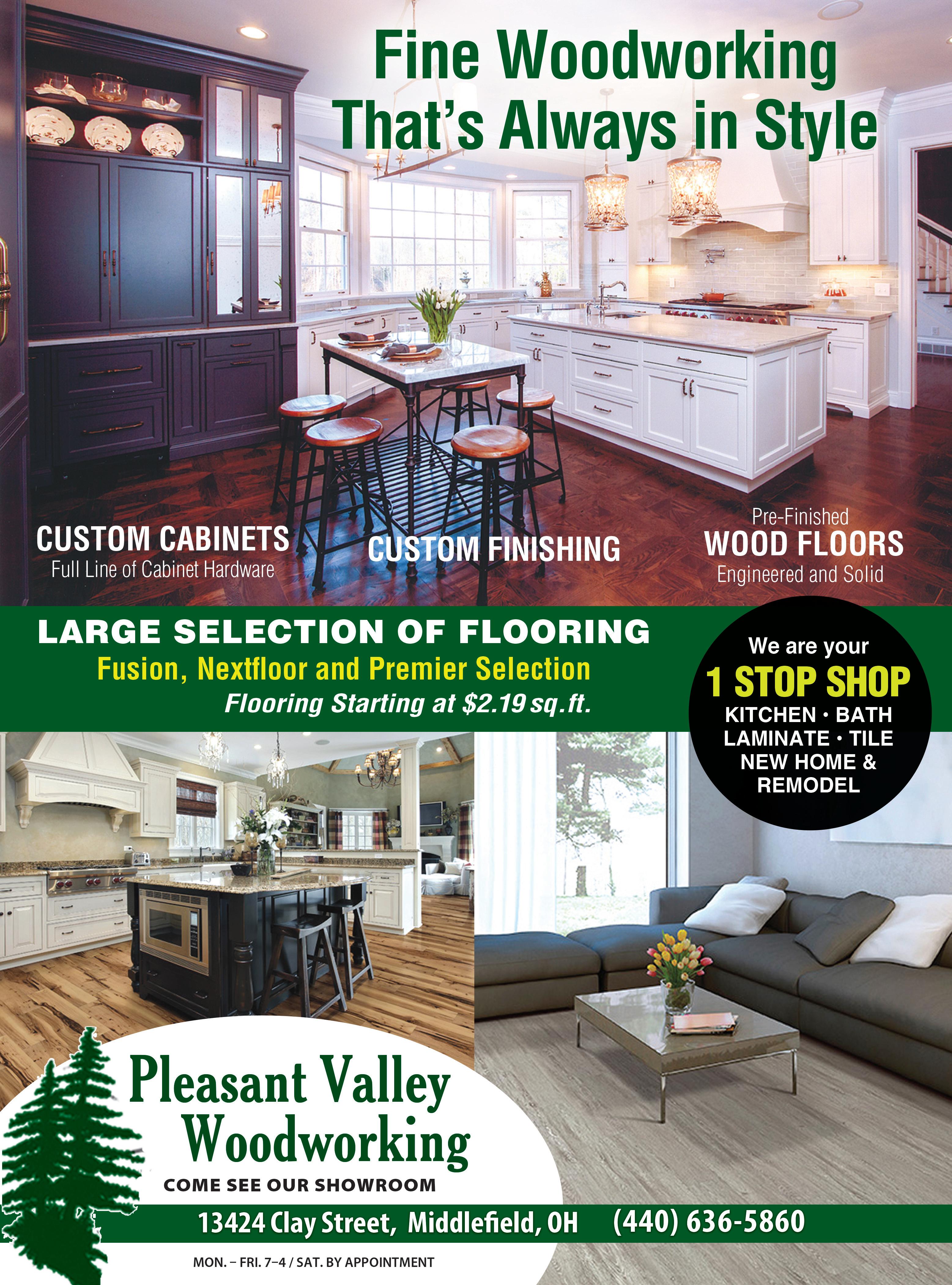




The kitchen may be the heart of a home, but when it comes to entertaining, a dining room — if one is present in a house — tends to be the prime gathering spot for meals.
Dining rooms may not be top on the list of spaces to renovate, as they tend to be used infrequently. But a dining room makeover may still be a worthy endeavor. Here are some simple ways to make the dining room more elegant and functional.
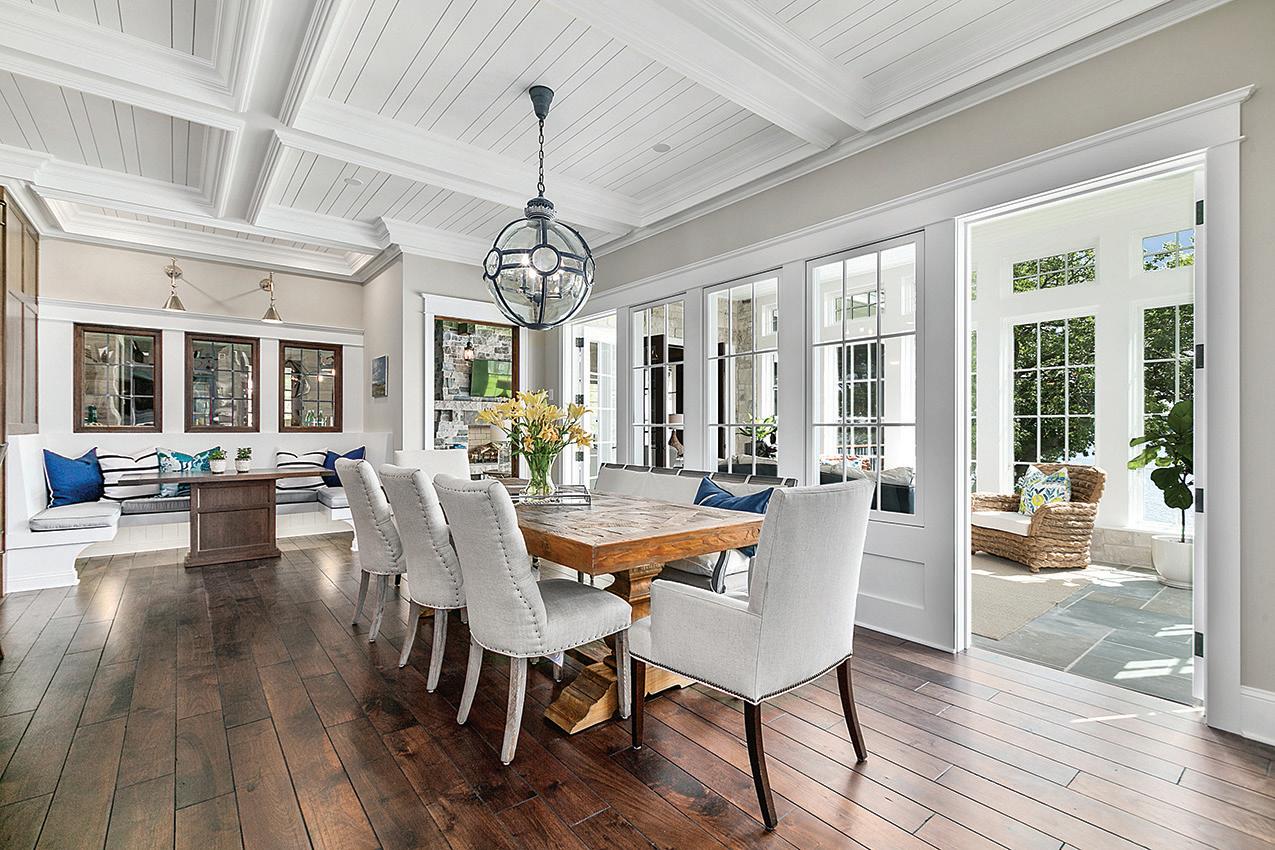
• Clear out the clutter. The first step toward improving a dining room eating area is to remove any extraneous items from the space. If the dining room table is not used very often, it likely has become a catch-all for other items, such as bills, newspapers or kids’ homework. Rather than using the dining space as a makeshift office or homework station, invest in a rolling cart to store those papers and other items. Simply roll it into a closet or another room when it’s time to host a party.
• Hang a statement light. Few decorative items add as much drama and ambiance to a dining space as a new overhead light. People hear chandelier and think a bejeweled or crystal design. But various chandelier styles

can fit the aesthetic of a home. The light will be a focal point and instantly make the dining area more elegant. Install the light on a dimmer to adjust the illumination as needed to set the mood.
• Invest in new linens. Purchase coordinating table linens that will be used for special occasions. A decorative table cloth or table runner coupled with cloth napkins and placemats helps to set the scene of the dinner party.
• Add a piece of artwork. Many modern homeowners have eschewed the China cabinet that once was standard in dining rooms. Rather than a bulky piece of furniture, a large piece of statement-making artwork or framed photos over a more minimalistic buffet table or small service bar is preferable. Choose artwork that complements the colors in the space.
• Include a centerpiece. Centerpieces add sophistication to the table and tie into the event. Floral arrangements, a bowl or basket of fruit, pine cones or greens from outdoors, or collectibles like shells in a tall canister can serve as centerpieces.

There are many simple ways to dress up dining spaces and make them more elegant.

SubMitted
Another cold year is upon Geauga County. Even though people in Northeast Ohio have lived through the winters, the cold can still be surprising.
There is nothing like a warm fireplace during those times. And, after all, where would you hang your Christmas stockings?
At American Home & Energy Products, the staff specializes in warmth, from its customer service and installers to its phenomenal Regency fireplaces, AHEP is committed to warming you and your home.
The staff welcomes people to their showroom to feel the heat and see the flames and embers their fireplaces can produce.
“Our wood-burning stoves and inserts are not only beautiful, but are so efficient, they can heat from 600 to 2200 square feet,” AHEP said in a statement. “Our gas fireplaces have the most realistic fires and produce an incredible amount of radiant heat, which is what you need to heat a room evenly and comfortably.
“And if you have a fireplace now, but aren’t happy with the heat output or even just its design, we have many sizes of inserts that can be installed that will help heat your home, as well as update the appearance,” AHEP added.
The staff has the expertise to help customers purchase the proper size of either wood or gas units for their homes’ needs, and has the construction knowledge to completely reface current fireplaces or create a completely new one.
From mantel shelves and mantel surrounds to stone or tile facing, AHEP has suppliers to get customers exactly what they are looking for.


“So, when someone asks you ‘what do you want for Christmas?’ You can tell them a new fireplace, and we’ll be right here to help make that happen,” AHEP said. They are located at 1270 Mentor Avenue in Painesville. Call 440-358-5858 or visit AHEP online at American-Home.com.

Remodeling projects are significant undertakings. Homeowners must consider a host of variables before any such project can begin. While planning ahead may take time, it is essential to ensuring successful completion of a renovation project. Consider these pre-renovation planning pointers to help any job go smoothly.
Renovation projects often involve balancing needs and wants, and determining if a project is a necessity or a luxury can set the timeline and course of the project. Is the roof leaking? If so, immediate action is necessary. Could the kitchen be a bit more functional? If the kitchen is still manageable, a homeowner may be able to wait a little bit to get better prices on appliances or contracting services.
Separating needs from wants helps homeowners map out a viable timeline that maximizes productivity and affordability.
Many homeowners are under the impression that doing the work themselves can save a considerable amount of money. This may be the case for homeowners with renovation experience. But by and large, professional contractors are an asset to any renovation. They can provide a realistic overview of the project, map out projected costs, point out areas that could be troublesome, and may have industry contacts that can keep supply costs
low. Even if a homeowner will do a portion of the job, a contractor can do the bulk of the work and keep the project on budget.
Get necessary permits
Permits are designed to ensure the work is being done to code and in a safe manner. However, they are not without additional costs and processing time, and that can cause some homeowners to skip this step. According to the home information site The Spruce, building permits cost anywhere from $400 to about $2,200 for new home construction. Building permits for smaller projects can cost $100 or less, and typically are based on a percentage of the anticipated cost of the project.
A permit may be issued the day the application is submitted, while other cities and towns may issue permits up to two or more weeks later. Factor permit fees and processing times into the renovation plan.
If it comes to light a homeowner did work without a required permit, he or she may face penalties; may have to tear out work done to have it inspected or redone; some may be unable to sell a home until permits have been obtained and work has been done to code. Homeowners insurance coverage also may be affected if homeowners do not obtain the proper permits.
Other considerations when planning a renovation include writing out a strict budget, gathering inspiration, drawing up toscale renovation plans, pouring over material reviews, and getting recommendations for reliable professionals to do the job.
MetroCreative
A fully finished and functional basement is a dream for many homeowners. Such a space, when completed, can serve as an entertainment space, a man cave, an artist’s studio, or any number of additional functions.

Despite their usefulness, finished basements are something of a rarity. In an analysis of data from the U.S. Census Bureau’s Survey of Construction, the National Association of Home Builders® found that only around 24 percent of single-family homes built in 2018 have basements. Homeowners who do not currently have a finished basement but are considering such a project can approach the remodel with a few key factors in mind. Careful consideration of these factors can ensure the project is budget-friendly and worthy of homeowners’ investments.
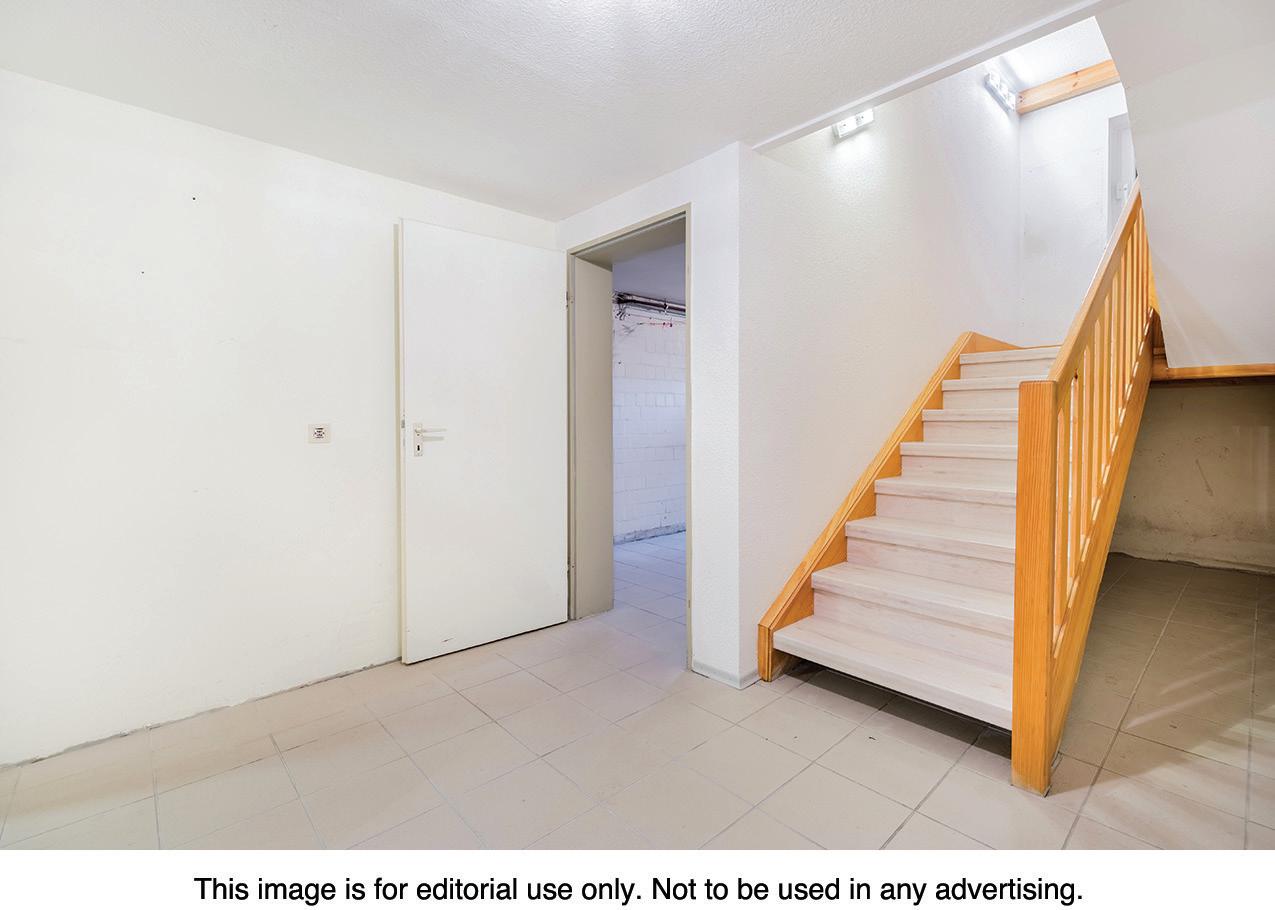
• Investment value: Conventional wisdom among home renovation and real estate experts suggests that a basement remodel is best if done to satisfy current inhabitants and not necessarily to appeal to prospective buyers once the home is put up for sale. Remodeling magazine reports that a midrange basement remodel costing around $70,000 will provide a return of around $49,000 (or 70 percent) at resale. Though that’s not a poor return on investment, homeowners who are remodeling a basement solely for the potential ROI at resale can find other projects that provide a greater return.
• Foundation: The foundation of the home must garner ample consideration before beginning a basement remodel. Certain foundation issues, such as soft concrete,

cracked or curved outside walls and cracks in the flooring, are indicative of significant issues with the foundation. These issues can be costly to address, and they must be remedied before the basement remodel can begin.
• Existing space: Some homeowners may have bought their homes with partially finished basements or even finished areas that they simply want to remodel. In such instances, a pre-remodel inspection from a licensed home inspector can save homeowners lots of money and heartache over the long haul. Partially finished or even aging finished basements might not have been renovated in adherence to codes, which could lead to costly violations down the road. An inspection in advance of a remodel can give homeowners an idea of what they will need to do to bring the basement up to code. Local officials also can provide a list of necessary permits and a detailed description of requirements to ensure the remodeled basement adheres to code.

• Soil: Soil surrounding the home should be tested prior to beginning the project. Radon is an odorless gas found in soil that the U.S. Environmental Protection Agency notes can increase individuals’ risk for lung cancer. Radon can seep into basements and increase that risk even further if it is present at elevated levels in the soil surrounding a home. Radon tests are simple and inexpensive, and no basement remodel project should begin without first conducting such a test.
Finished basements are valuable spaces. Homeowners who want to finish or remodel their basements should consider a host of factors before beginning the renovation.
Do you still have an avocado green kitchen? Is your living room dank and dark? Perhaps there is only one bathroom for a family of six? Answering yes to any of these questions could serve as the catalyst for a home renovation project.
Home improvement projects come in all shapes and sizes — some with huge budgets and others that are more cost-conscious. Regardless of what homeowners hope to achieve with their renovations, a common goal across any price point is a desire to save as much money as possible. Home renovations can be expensive, but there are ways to cut costs.
• Assess the merit of the project. Remodeling magazine annually publishes a “Cost
vs. Value Report” that lists the average cost and return on investment homeowners can expect of various types of projects. If you’re planning to sell your home soon, it may be best to focus on repairs and renovations that will generate the most substantial ROI.
• Hire a contractor. Even avid do-it-yourselfers can sometimes benefit from a contractor’s expertise, particularly for complex tasks. Don’t waste money by trying tough jobs yourself; rely on an experienced contractor who can get supplies for less money and will do the job right the first time. Compare bids from several different contractors and figure out the best value.

• Refurbish existing features. Rather than a complete gut and rebuild, figure out where you can revitalize existing fixtures and
more. For example, refinishing existing cabinets can save you up to 50 percent compared with the cost of new cabinetry, according to Angi (formerly Angie’s List), a cost comparison and business review resource.
• Choose midgrade materials. Certain materials may be all the rage but they come with a higher price tag. Angi reports that granite counters could be $60 to $100 per square foot. However, a composite or laminate that looks like granite and wears well may be $10 to 40 per square foot. Figure out where you can choose middle-of-the-road materials for maximum value.
• Avoid peak seasons. You’ll pay more to install a deck or a pool right before the outdoor entertaining season. There also may be a premium to get work done right before a
major holiday. Therefore, consult the calendar to find an off time for a renovation and book it then to save.
• Do some prep work. You might be able to save by doing some of the demolition and preparatory work yourself. For example, you can tear up old carpeting before the installation of new tile floors. Perhaps you can mend and patch up walls before a paint job.
• Buy a display item. Former showroom kitchens and baths often are sourced at a fraction of their recommended retail prices, according to Real Homes, a home remodel guide based in the United Kingdom. Retailers often update their displays and you may score existing showroom items at a discount.
Renovations can be expensive, but there are many different ways to cut costs.
MetroCreative
Vacation often serves as a well-deserved break from the hustle and bustle of daily life. When relaxing and recharging away from home, the last thing vacationers want to think about is the safety of their homes and everything inside them. However, the National Council for Home Safety and Security and Statistics Canada estimate that more than two million burglaries occur in the United States and Canada every year. That underscores the importance of protecting your home at all times, including when you’re not there.
• Create the impression that someone
is home. Just because you’re heading off for parts unknown doesn’t mean you can’t create the impression that life is carrying on as usual within the walls of your home. Smart home technology now enables homeowners to set timers on lights and even home electronics like televisions and radios. Homeowners also can ask neighbors to pick up their mail or halt delivery until they return from their trips. Nothing says “no one’s home” as definitively as an overflowing mailbox.
• Keep quiet on social media. A Credit Sesame survey of former burglars in the United Kingdom found that 78 percent acknowledged monitoring social media plat-
forms such as Facebook and Twitter as they try to find homes to burglarize. Individuals about to go on vacation should avoid sharing that on social media.
• Stay silent while you’re away as well. Social media silence should be continued while you’re on vacation as well. No matter how tempting it may be to share photos from an exotic location, such posts could catch the attention of all the wrong people. A recent report from MetLife indicated that 35 percent of Americans between the ages of 18 and 34 check in from their locations via social media. That can alert criminals that no one is manning the fort back home.
• Switch from a traditional lock and key to a lockbox. Individuals who travel frequently can take a page from the realtor notebook and switch from a traditional lock and key lock system to a lockbox. Lockboxes require that a code is entered before a box containing a key can be unlocked. Homeowners who want this added measure of protection don’t even need to put a key inside the lockbox, which typically covers a lock, making it extremely difficult for potential thieves to pick the lock.
Before leaving for vacation, individuals can implement various strategies and safety measures to protect their homes and their belongings while they’re away.
MetroCreative


Halloween is a magical time of year. Homes are adorned with festive fall accou trements, including hay bails, pumpkins and mums as well as the black, purple and orange decorations that are unique to a season of ghouls and goblins.
Although decorating is a large part of the fun of Halloween, the sweet treats that are distributed to trick-or-treaters and presented at Halloween parties are arguably the most popular component of this beloved holiday. Candy is everywhere come Halloween. The National Confectioners’ Association reports that Halloween is the largest confectionary holiday, followed by Easter and Christmas. The National Retail Federation and NCA in dicate the average American consumes 3.4 pounds of candy around Halloween, and 600 million pounds of candy are purchased across the country for the holiday.
Is it possible to escape the Halloween sugar overload? For those who want to enjoy some healthier options than candy corns and other sweet staples, these ideas are not so frightening.
• Pizza mummy: Use slices of toasted sandwich bread or English muffins to make some spooktacular fare. Coat the bread with pizza sauce. Then place thin vertical slices of mozzarella cheese in a haphazard pattern to replicate the look of gauze on a mummy. Two pieces of sliced black olives serve as the eyes.

• White, orange and yellow platter: Simulate the look of candy corns’ white, orange and yellow color palette with healthier offerings. Stack cauliflower, or another white food like monterey jack cheese, baby carrots and yellow bell peppers on a platter. Serve with your favorite dip.
• Deviled brains: Turn regular deviled eggs into something more sinister for Halloween buffet tables. Simply add food coloring to the filling to create a pinkish-brown hue that resembles a human brain. Then use a
piping bag fitted with a thin icing tip to pipe the shape of brains onto the hardboiled egg halves.
• Veggie skeleton: Use assorted vegetable slices, cheese sticks, fruits, nuts, and more to inspire a Halloween-inspired charcuterie board. Arrange everything to resemble a skeleton on the platter.
• Ghostly bananas: Insert popsicle sticks into the bottoms of bananas and freeze until solid. Prepare white melting chocolate according to directions, then dip the frozen bananas into it. While wet, stick on two mini chocolate chips to make the eyes of the ghosts. Place in the refrigerator to harden.
• Spider crackers: Use buttery Ritz® crackers or something similar for this recipe. Spread a relatively thick layer of cream cheese (or peanut butter if allergies are not a concern) on one cracker. Cut thin pretzel sticks in half and use four on each side to make spider legs, sticking them into the cream cheese. Top with another cracker and secure to the cream cheese. Raisins connected with more cream cheese complete the eyes of the spiders.
Anyone can use his or her imagination to make delectable and healthy Halloween offerings in lieu of more sweets.










Fireplaces are useful features in a home. Fireplaces are sources of ambient heat and also add style to indoor spaces.
Fireplaces can complement just about any interior style. Fireplaces can be traditional and burn wood or connect to a home’s natural gas supply for on-demand ambiance. What’s more, fireplaces may come in vented or ventless varieties, depending on homeowners’ preferences and what is allowed by community building codes. That means a chimney or flue may not be needed — expanding the list of rooms where a fireplace can be installed.
Certain trends have emerged among fireplace fans in recent years. Here’s a look at what’s getting consumers fired up about these home decor elements.
• Minimalist style: Many fireplaces are designed in neutral colors with minimal trim that directs focus on the fire and not the appliance. When the fireplace is not in use, it blends in with surroundings and will not compete for attention with other design elements.
• Convertible fireplaces: Homeowners can choose between open or sealed fireplaces.
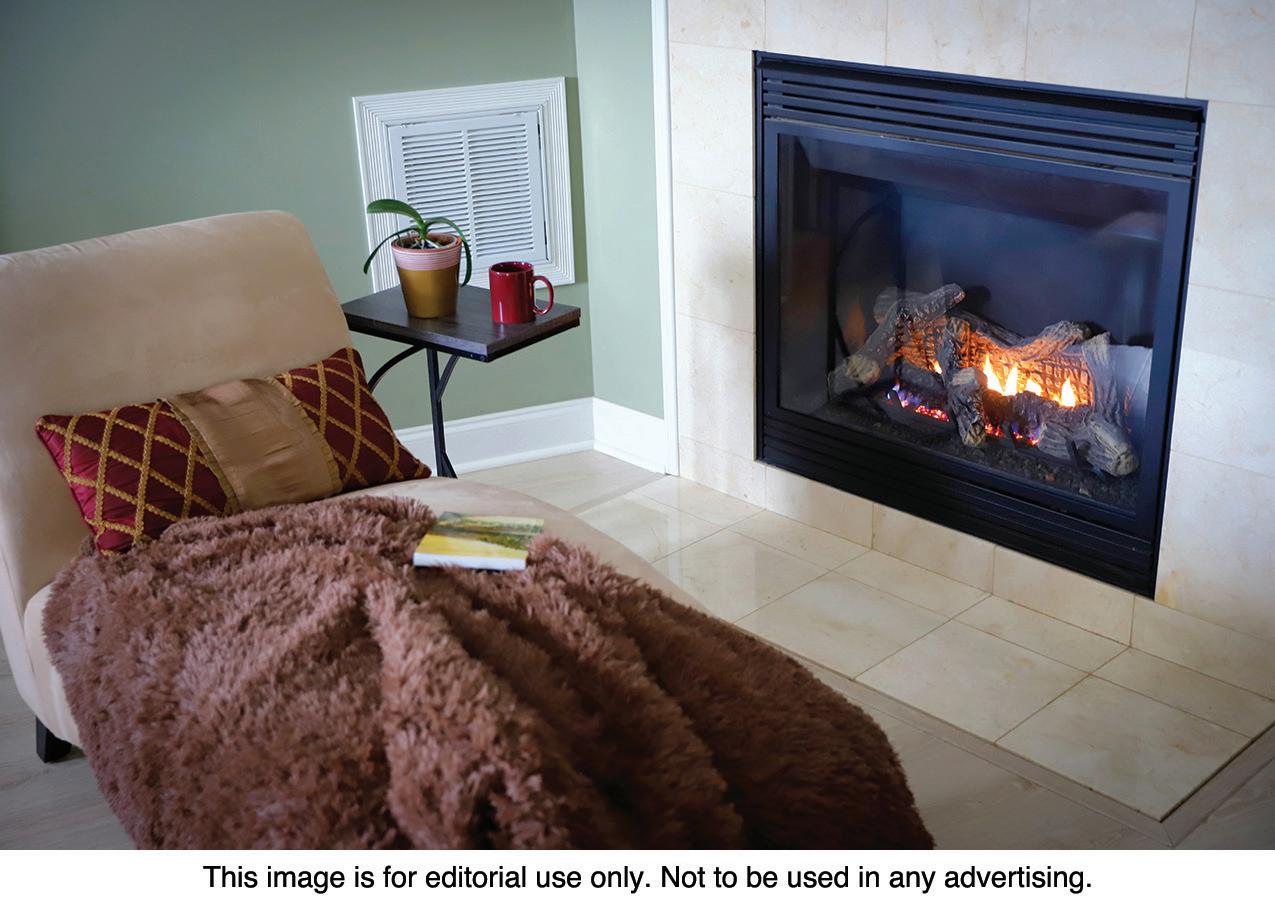



A convertible fireplace enables homeowners to have the best features of these options. A convertible fireplace can be converted to wood from gas, or the opposite, in as little as 30 minutes.
• Nature-inspired materials: Natural stone continues to be a material of choice in fireplace surrounds. Light colors work well for a fireplace, and also fit with today’s lighter color interior design preferences. Natural stone also works perfectly with both contemporary and rustic decor.
• Vintage fireplaces: Vintage continues to be a buzzword in 2022, and the choice to go vintage also applies to fireplace styles. A room decorated in vintage elements can be complemented with a vintage fireplace or one designed to look vintage.
• Integrate into wall decor: Fireplaces that are built right into a wall save space. One can have a television and a fireplace on the same wall. These types of fireplaces work well in modern home designs. Other fireplaces may be built into bookshelves or other wall features.
Fireplaces can improve the appeal of a home. Various trends are popular this year, making fireplaces highly coveted features.
MetroCreative
The number of professionals working remotely skyrocketed in 2020, when businesses were forced to close their offices in an effort to slow the spread of the COVID-19 virus. As the world transitions from the pandemic phase to an endemic phase, many office workers also are transitioning back to their offices.
A recent survey from the Pew Research Center found that 59 percent of workers in the United States are now working from home all or most of the time, while 22 percent are rarely or never working from home. In 2020, 70 percent of workers were working from home all or most of the time, while 17 percent rarely or never worked from home. Those figures reflect that work life, albeit gradually, is returning to pre-pandemic norms.
As individuals find themselves going back to the office with increased frequency, they might be wondering what to do with their home offices. If space inside a home is at a premium, then repurposing a home office into a space that can be used more frequently is a great way to make better use of the existing square footage. The following are some ways homeowners can transform home offices created during the pandemic into more useful spaces.
• Go back in time. Perhaps the easiest thing to do with a home office that is no longer needed is to return the room to its pre-pandemic state. Because the shift to remote work was so sudden, many homeowners were forced to turn washrooms, breakfast nooks or areas of their basements into home offices. Returning those spaces to their initial functions can make a home feel less cluttered and add more room for residents to relax and get around.
• Create a new entertainment area. Many homeowners converted a spare bedroom into a home office during the pandemic. In such instances, guest beds and other furniture might have been moved into storage or even sold or discarded. Either way, that means the office was cleared of bedroom furniture. Now

Geauga County


Maple Leaf
440-285-2013
that the room no longer needs to be an office and now that homeowners have made due without the extra bedroom, the room can be converted into an entertainment area. Swap out the desk for a foldout couch that can still accommodate overnight guests when necessary. Then mount a flatscreen television on the wall and utilize the room as a gaming room for kids or a film room/man cave for mom or dad.
• Create an in-law suite. The pandemic separated families, as people living in different households were advised to avoid gatherings to stop the spread of the virus. Individuals with aging parents may have felt particularly heartbroken by this forced separation, especially if their elderly parents were living in nursing homes that were stretched thin by staff shortages and other challenges. In the aftermath of the pandemic phase, families may want to invite aging relatives to live with them. Home offices can be repurposed into in-law suites so aging parents don’t have to confront the isolation and loneliness many felt during the height of the pandemic.
As professionals return to their offices with greater frequency, they can transform their offices into spaces they’re likely to use more often.

Spring and summer are perhaps the busiest times of year for gardeners. However, fall also is a prime time to tend to gardens.
The tree and bare root retailer Bower & Branch advises that soil temperatures in many regions of the country may still be warm enough to encourage root growth well into the start of winter. Furthermore, fall is often the ideal time to plant, fertilize and keep a garden going or to get a head start on next year’s bounty.
Here are some tips to make the most of the fall gardening season.
• Think about fall annuals and bulb planting. Near the end of September, start planting cool-weather-loving pansies and violas for pops of color as summer flowers fade. Also, it’s a good idea to stock up on bulbs that will bloom in the months to come before they sell out in stores. Wait until the temperatures really cool down before planting them in desired spots for spring sprouts.
• Sow salad seeds. Lettuce, spinach, radishes, and arugula tolerate cooler temperatures. Try new and interesting lettuce varieties and enjoy salads well into the fall season.
• Take inventory of the sun. Positioning a garden carefully means maximizing hours of sunlight, which begin to dwindle in the fall. Experts say gardens grow best in sunny locations that receive six hours of direct sunlight each day. This is where container gardens can be helpful, as they allow gardeners to move plants into spots that will get ample sunlight.
• Fill in landscaping gaps. Some fall plants can add color around the landscape and brighten up homes to add curb appeal.

through late summer.
• Clean up unwanted growth. Fall is an ideal time to cut back spent vegetable plants and get rid of errant weeds. Rather

peratures gradually begin to cool, start taking cuttings from perennials, gathering seed pods from azaleas and rhododendrons and dividing hardwood cuttings, says the resource
Gardening Know How. Consult with a garden center or horticulturist on the proper ways to propagate stems using rooting hormone and
sential in the fall and winter as roots can still tion as plants go dormant.
Fall planting and maintenance can extend gardening season and improve the chances of growing a healthy spring garden.
MetroCreative
Jaw-dropping features can sell a home in a heartbeat. A penthouse apartment with floorto-ceiling windows and a panoramic view of a city skyline likely won’t prove a hard sell, nor will a home with an infinity pool overlooking a landscape of rolling hills. As awe-inspiring as such features can be, some more subtle components, such as authentic hardwood floors, also can do much to make a home more appealing to prospective buyers.
Hardwood flooring is a sought-after commodity. Data from the National Association of Realtors indicates that 54 percent of home buyers are willing to pay more for hardwood floors. In fact, NAR figures indicate that 28 percent of buyers between the ages of 35 and 54 consider hardwood floors “very important” when looking for a home. Homeowners who are considering selling their homes, or those who simply want to upgrade their existing flooring, may want to consider installing hardwood flooring. Though it’s a project best left to professionals, hardwood flooring can be installed by skilled DIYers. In such instances, homeowners may want to keep these dos and don’ts in mind.
DO hire a professional if you have limited or no DIY flooring experience. Hardwood flooring installation is not generally a project for novice DIYers. Hardwood flooring projects may present some common challenges, but no two homes are the same. So unless they have prior experience installing floors in multiple rooms or homes, homeowners may save themselves time, trouble and a significant amount of money hiring a professional to do the job.

DON’T ignore the subfloor. New hardwoods won’t erase the problem of subfloors
in poor condition. According to the home renovation experts at BobVila.com, squeaky floors could be an indication that the subfloor has begun to warp or twist. Sinking floors are another indicator of deteriorating subfloors. Subfloors should be somewhat level before new hardwoods are installed, so DIYers should inspect and address subfloor issues before installing new flooring.
DO expose wood flooring to the elements in your home prior to installation. The home improvement resource BuildDirect recommends acclimating hardwoods to the space where they will be installed. Skipping this important step could result in gaps during the winter and cupping over the summer. To acclimate hardwoods, open the boxes and spread them out for about a week while running the air conditioner or heater at normal levels. When storing hardwoods prior to installation, avoid keeping them in potentially moist areas like a basement.

DON’T skimp on tools. A DIY hardwood flooring installation might be less expensive than hiring a professional, but homeowners should resist any temptation to increase those savings further by purchasing less costly tools or fewer tools than is necessary to complete the job. BuildDirect notes that DIYers will need at least a miter saw, table saw, cleat-nailer or stapler, finish nailer, compressor, jamb saw, chalk line, nail set, and tape measurer when installing hardwood floors. Purchase all necessary tools and read product reviews to ensure each tool is up to the task.

Wood floors can be awe-inspiring. Some homeowners can install such flooring on their own, and the project can be much easier if they learn as much about installation as possible prior to beginning the project.
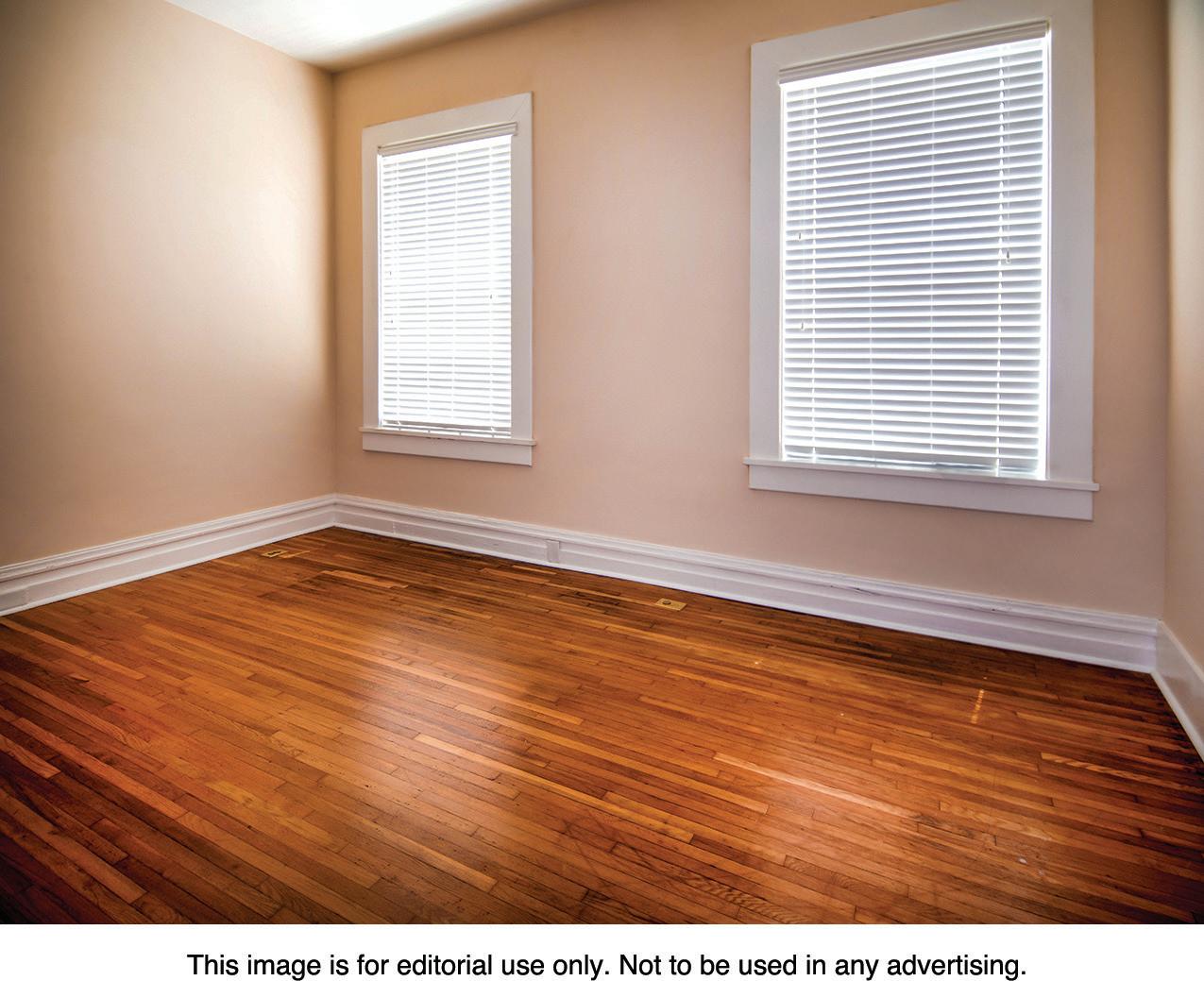
The Wig Gallery in Madison Village, opened in 2019, makes shopping for wigs easy, fun and informative.
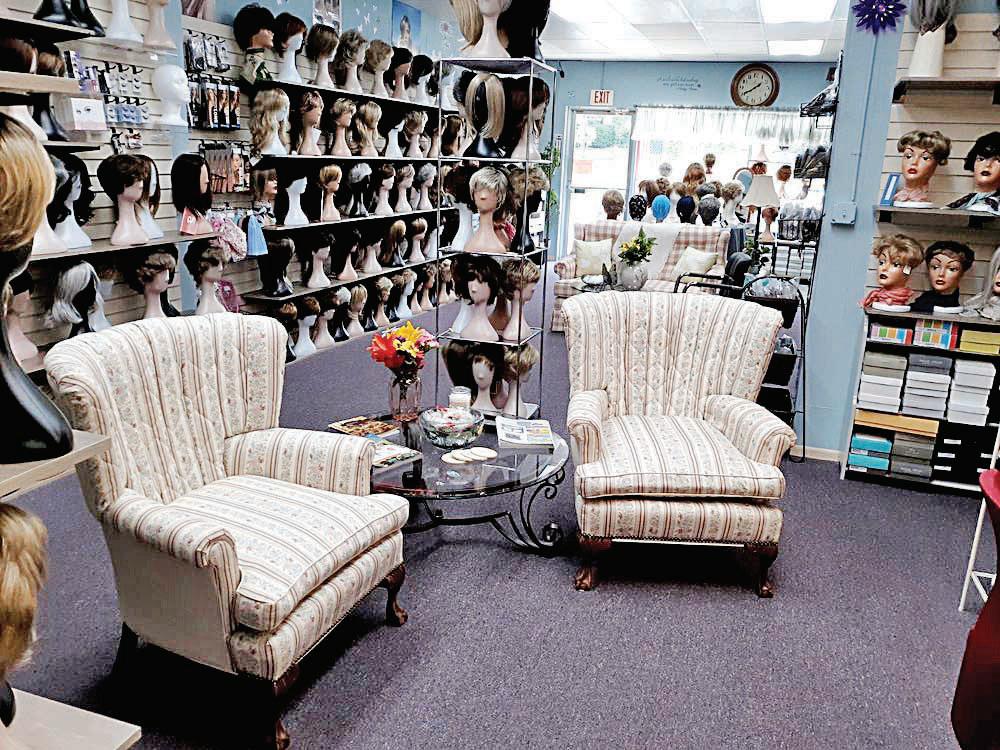
Anyone who has ordered wigs online might know how disappointing it can be, whether the wig isn’t the right color, the right style or something is off.
Going through chemotherapy for breast cancer in 2015, I know that frustration all too well, as do many of the women who come into my shop.
The decision to establish a wig shop stemmed from my desire to help women who’ve lost hair not only from cancer treatments, but also as a result of alopecia, stress, having had COVID-19, hormone changes and many other reasons.
I want to help anyone with any type of hair loss feel like themselves again and love who they see in the mirror. Wigs do that. They can transform your look in a second and bring
back the confidence that may have been lost.
We currently have over 400 wigs in stock, featuring prominent name brands such as Rene of Paris, Jon Renau, Noriko, Raquel Welch, Ellen Wille, Tony of Beverly and many more.
We offer not only a wide selection of wigs, but also related accessories such as hair extensions, head coverings, wig grips and caps, eyelashes, wig heads and toppers — which are hair pieces worn on the top of the head that provide additional hair volume or coverage.
We also have the Gifted Wig Program, which provides donated wigs to women who are going through chemotherapy at no cost to them. We always welcome any wig donations that are sent our way.

We are open by appointments only and encourage bringing someone along to help you make your decision. Purchasing hair is hard work and having someone with you that you trust can make a world of difference.
Call 440-417-0209 to schedule your appointment.


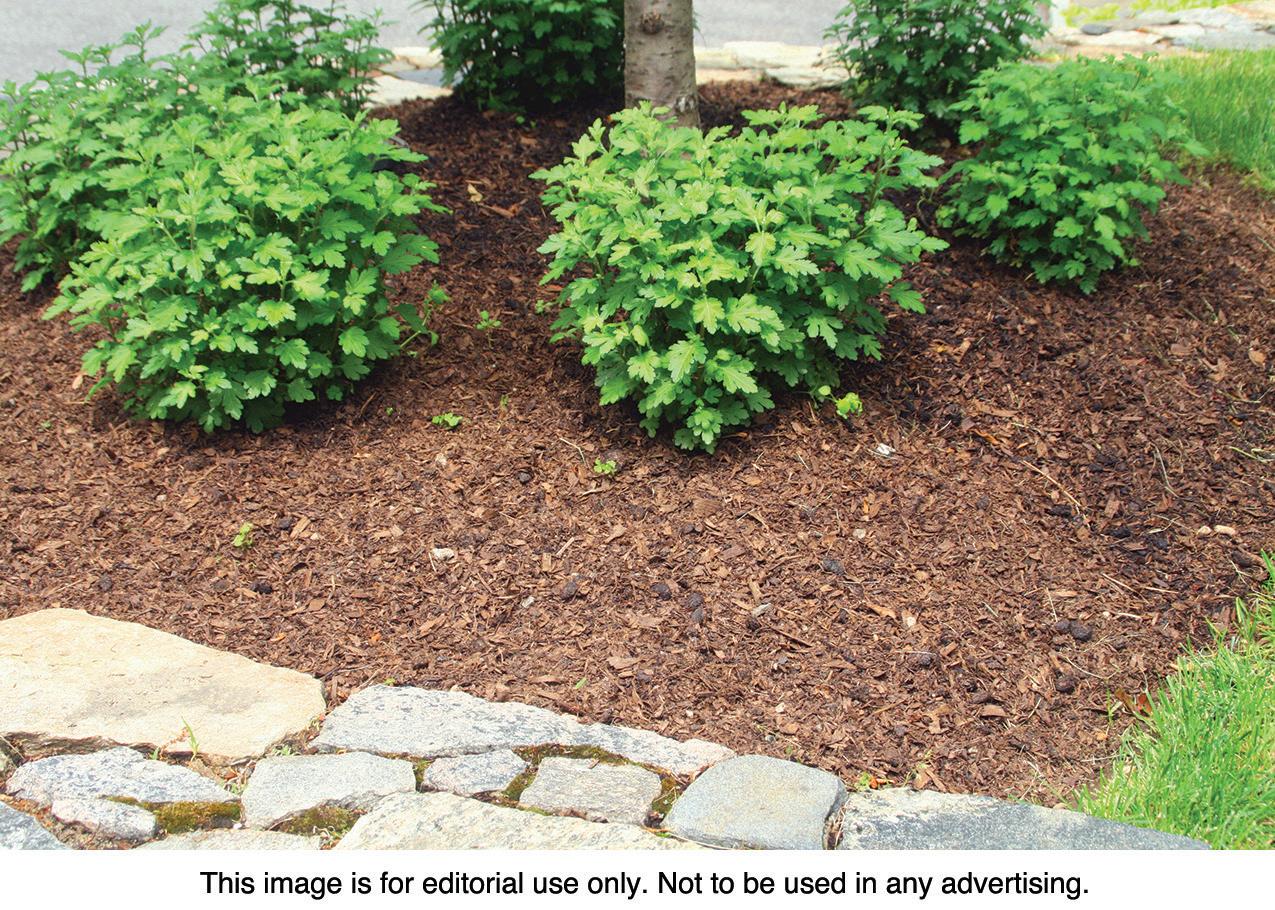

MetroCreative
Many homeowners think they have to spend tons of green to get green in their landscape, but that isn’t necessarily so. Homeowners can improve their landscapes without digging themselves into financial holes. These strategies can help anyone save some cash and still end up with attractive gardens and more.
• Use stones or gravel for a walkway. If commercially installed pavers or cement walkways are not within your budget, there are some affordable alternatives. Flagstone or individually purchased and spaced pavers and pea gravel can be used to create pathways. Some construction sites even offer free stones when asked. Soften the look with moss or other plants on the perimeter.
• Remove some lawn. Lawns can require hours of upkeep that may involve the application of expensive fertilizers and weed-killing products that are not always so eco-friendly. Reduce the size of a lawn by putting in a mixed planting bed of perennials or ornamental grasses, or use landscape fabric and mulch.

• Look for free mulch. Municipal recycling centers may offer residents access to free mulch made from grinding up leaves, branches and other plant debris collected throughout the town. Simply bring a few containers to the recycling center and spread the mulch for an ornamental look or to insulate landscapes over winter and protect against weeds.
• Repurpose old items into planters. Old
wheelbarrows, barrels, watering cans, and other items can be repurposed into container gardening vessels. Figure out if items marked for the garbage bin can be incorporated into garden features instead.
• Invest in plants that are easy to propagate. Perennials are the gardener’s friend when it comes to saving money. These plants sprout anew each year, and many, such as sedum, catmint, ferns, hostas, and black-eyed Susans, can propagate by division. Figure out the best times of year to divide the plants and start growing them in individual containers before planting the sturdy new shoots in the ground. A single variety of plants grouped together in mass plantings is affordable and easy.
• Shop end-of season sales. Garden centers may begin to make room for holiday items come the fall. Take advantage of reduced costs on remaining plants and landscape accessories during this time of year. Plants can be covered or allowed to thrive indoors until they can be planted in the spring.

• Pool your resources. Homeowners planning on a big landscaping or revitalization project may want to speak with neighbors to see if they’re interested in doing the same. Contractors guaranteed business from a few homes in the same neighborhood may be willing to negotiate lower prices for the volume of work on things like driveway repaving, deck- or fence-building, or installation of paver patios.
Some handy ideas can help homeowners transform landscapes without spending too much.

